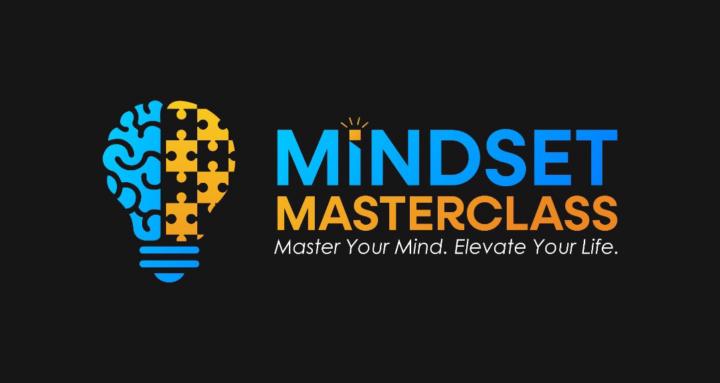Feb 20 • Mindset Mastery
Dopamine Is Not Your Dealer: The Hidden Addiction to Thought Patterns
(Estimated Read Time: 7 Minutes)
Hooked on Dopamine? Science Says It’s Actually Your Subconscious Holding You Back
Watch the Video Article 👉 https://youtu.be/7I3i1-2BOYY
When people talk about “addiction,” they often point fingers at dopamine — a supposed chemical mastermind whispering, “One more round,” “One more scroll,” “One more bite.” But what if our fixation on dopamine is just surface-level? What if the real driving force behind our most stubborn habits isn’t this neurotransmitter at all, but the well-worn stories and tales (i.e., mental scripts) we keep telling ourselves? What if the true culprit is the quiet, often invisible subconscious beliefs that shape our every move?
Welcome to a deeper look at what truly hooks us: Our own thought patterns. Once you understand how these mental pathways form, reinforce themselves and keep you locked into certain behaviors, you’ll see that dopamine isn’t the villain. It’s just the messenger. The message itself? The subconscious meaning you’ve attached to your daily experiences.
Below is a practical roadmap to finally rewrite that script and take back conscious control of your life.
Step 1: Laying the Cognitive Bedrock — Decades of Meaning-Making
From the moment we’re old enough to interpret the world, we start assigning meaning to what we see, hear, and even the emotions we feel. Some of these interpretations are small, some monumental, but together they form the bedrock of our psychological landscape. Over time, these “attributed meanings” shape our thoughts, and our thoughts determine how we react to everyday events.
• Early Imprints: Maybe as a child, you began to think you were invisible around busy parents or teachers. You decided silence was “rejection” or “disapproval.” This labeling process might never fully surface in your conscious mind, but it lingers, ready to color your view of any quiet moment in adulthood.
Stored Meanings: Each experience — a harsh comment or an enthusiastic cheer — becomes a data point you interpret, reinforcing or refuting existing beliefs. The more often you validate a belief by repeating it to yourself, the more deeply it encodes.
Repetition = Programming.
🥾 Shoe Leather Psychology: Recognize that your core beliefs might be rooted in childhood logic: Powerful once, but possibly outdated now. Identifying how these early beliefs no longer fit your present reality is the first step toward rethinking and re-engineering them.
Step 2: The Rise to the Surface — How Thought Patterns Emerge
Think of your mind as a library of experiences. When you face a situation (like a challenging work project or a potential conflict in a friendship) your subconscious librarian steps in, scanning your collection of memories and beliefs. It then pulls out thoughts that match your current scenario.
This phenomenon is often called “over-assimilation,” where the brain assumes today’s situation must be just like all previous ones.
• Preferred Brain Routes
Over time, you develop “go-to” ways of thinking. If you’ve built your self-image on achieving, you might catastrophize any lull in productivity as laziness or impending failure. You might classify disagreement as devaluing. You might see hurdles to a goal as failure at life itself.
• Hierarchical Access
The mind doesn’t just pull random thoughts from the shelf. It picks those that align with your strongest core beliefs — the ones you’ve reinforced the most through repetition. If “silence means rejection” is lodged in your belief system, your brain eagerly hands you that assumption the moment someone doesn’t text back right away.
🥾 Shoe Leather Psychology: Observe how quickly and automatically certain thoughts pop into your mind. Pause to notice whether they truly fit the situation or merely reflect old, entrenched beliefs. Keep in mind, the brain manufactures thoughts like a blizzard produces snowflakes. It’s simply what that creative part of the brain does. The key is to sift through the blizzard, recognizing that many — or most — thoughts may not fit the current situation. Then select the ones that do fit or the one that’s the BEST fit.
Use the TSP (Teaspoon) Approach:
• T — Thought
• S — Selection
• P — Process
With your cognitive TSP, you can serve yourself a more successful life.
Step 3: Thought → Behavior — The Engine of Reinforcement
A single thought may seem harmless, but repeated over time it morphs into an internal script that drives how you act and respond. Once you act on that thought and see suspicions confirmed, even if only once in a while, you strengthen your conviction that the original script was correct.
• Feedback Loop
Behavior driven by a thought pattern often creates outcomes that confirm the thought. For instance, if you believe “my love language is physical touch,” you’ll zero in on instances of its absence, finding reasons to believe you are unloved. The more you look, the more you notice and your brain goes, “See? I told you so. That’s what I’ve been telling you all along.”
• Dopamine the Repetition Coach
Dopamine isn’t the puppet master yanking your strings. Instead, it highlights that your meaning-based action was “rewarding” in some way, making you more likely to repeat it. It’s less a temptation and more a teacher’s gold star, reinforcing the mental routine you’ve deemed important.
Remember: Dopamine is not directional!
It will reward any behavior you place meaning on, healthy or not.
🥾 Shoe Leather Psychology: By linking being unloved to the absence of a behavior (e.g., physical touch), you unknowingly chase the same loop of distorted definition. The resulting reinforcement of dopamine simply seals the deal and you conclude your subconscious script is accurate and justified.
Step 4: Dopamine Is Not the Villain — Addiction to Thought Patterns
If dopamine isn’t the culprit behind your repetitive behaviors, then what is? The addiction lies in predictability, the comfort of returning to familiar meaning-based mental territory. Our feet always follow our values. If you brainstorm a list of behaviors taking up time in your life — healthy and unhealthy — each of them persists because, at some level, you’ve decided there’s value in that behavior.
Even the most self-defeating actions offer some perceived payoff, or you wouldn’t continue them. In the absence of perceived reinforcement, behaviors fade away. Every behavior begins with a motive born of the meaning (ROI) we attach to it.
• Pattern Recognition
The brain loves what’s familiar, even when it hurts you. If you’ve told yourself for years that you’re worthless unless you outperform everyone, that story becomes a reflex.
Dopamine’s role is simply to reinforce what your mind has already decided is important.
• Why It Seems So Strong
Altering a hardened thought pattern can feel uncomfortable — like forging a new path through a dense forest. Meanwhile, the well-trodden path feels effortless. You keep going back, not because dopamine forces you, but because it’s easier than crafting new beliefs.
🥾 Shoe Leather Psychology: Recognize that your mind is drawn to safe, well-known scripts. The “drug” you crave isn’t dopamine; it’s the soothing (and sometimes deceptive) comfort of the stories you’ve always told yourself.
Step 5: Breaking the Loop — Cognitive Rewiring for True Change
Transforming ingrained thought patterns isn’t about shutting off dopamine; it’s about gently dismantling beliefs that no longer serve you and replacing them with ones that do. Here’s a concrete strategy:
1. Expose the Thought Pattern
Pinpoint the core belief behind the behavior you want to change. If you feel anxious when hearing a critique, ask: “Is there a deeper story here about my worth or safety being threatened by criticism?”
2. Challenge Its Validity
Investigate where this belief originated. Is it objectively true today, or did it emerge from a childhood environment that no longer applies?
3. Consciously Disrupt It
Take small, deliberate actions that contradict the old pattern. If your belief is “I must never be criticized,” devote time to meditating on evidence of your value and practice daily self-affirmation. Anticipate discomfort; it’s a sign you’re forging new paths through uncharted neural territory.
4. Make Ruts in the New Pathway
Just as old patterns became automatic through repetition, new ones need consistent practice. Each time you follow through on a healthier, more accurate belief, you embed it more deeply. Over time, you’ll reinforce the idea that critiques are simply information — another person’s perspective — rather than a threat to your identity.
🥾 Shoe Leather Psychology: Change requires intention. By identifying unhelpful scripts, questioning their accuracy, and acting in new ways, you gradually build a healthier reality — not fueled by unconscious habit, but guided by conscious choice.
In Conclusion: Write Your Own Story
Dopamine might be the popular scapegoat but remember: It’s not your dealer. It’s just the spotlight operator, illuminating patterns you’ve repeatedly shown your brain are important. If you want freedom from habits like endless social media scrolling, catastrophizing criticism, or chasing validation, zoom in on the stories (i.e., mental scripts) beneath those behaviors.
Your mind thrives on the comfort of familiar narratives. When you rewrite those narratives — trading old beliefs that no longer serve you for new ones that reflect who you want to be — dopamine will support the shift by reinforcing the new script. You are, and always have been, in the driver’s seat.
The real question is: Do you still want to travel the same roads, or is it time to explore a different route?
🥾🥾🥾Shoe Leather Level Takeaways🥾🥾🥾
1. Mindset Self-Audit: Notice persistent worries or recurring behaviors. Write down the core beliefs they might stem from.
2. Cognition Fact-Check: Ask if the belief is still valid or if it’s anchored in past experiences that no longer apply.
3. Measured Micro-Risks: Interrupt your usual pattern in a small but intentional way — take an evening off, go to the gym when you’d normally scroll social media, or reach out to a friend and have a courteous conversation instead of letting assumptions brew.
4. Repeat to Transform: Consistency rewires your brain. Each time you choose a healthier belief, the pathways to it become stronger and faster.
Share This: If these insights made sense to you, pass them along. A friend wrestling with similar thought loops might be just one new perspective away from breaking free.
🥾 Shoe Leather Psychology: Our minds aren’t hooked on chemicals; they’re captivated and programmed by the narratives we weave.
Share in the community chat how YOU plan to take the reins of your brain and choose healthier stories.
7
22 comments

skool.com/mindset
Unlock cognitive potential and elevate your life. Join us at the peak of life mastery learning psychological secrets of mindset and success.
Powered by





